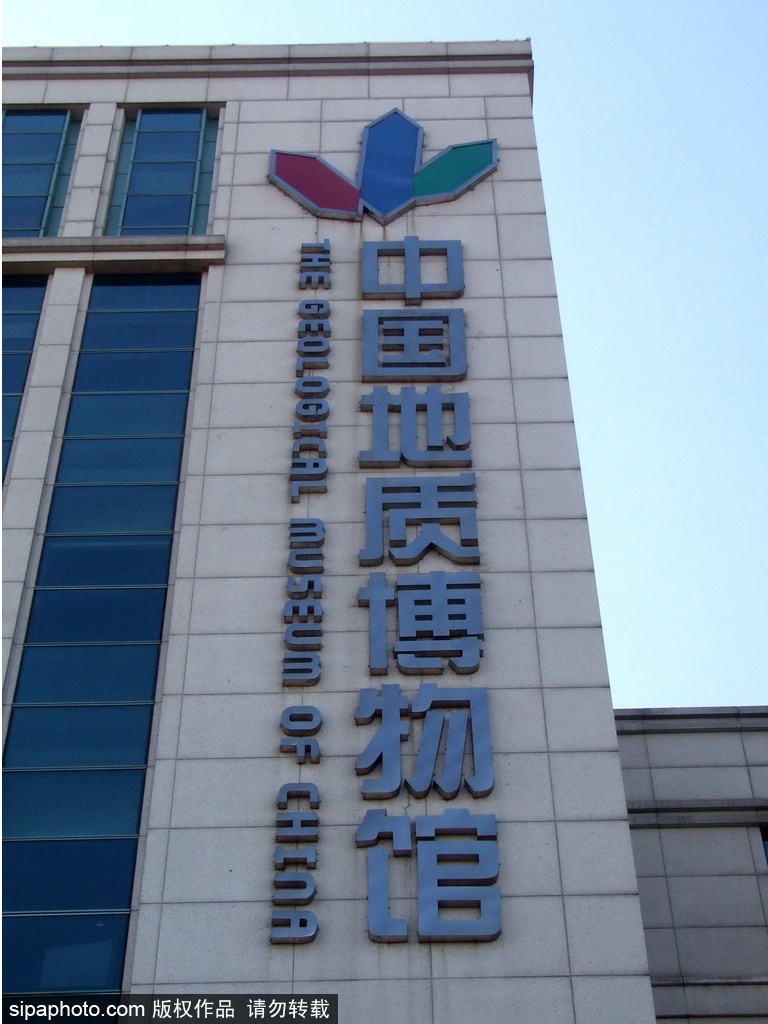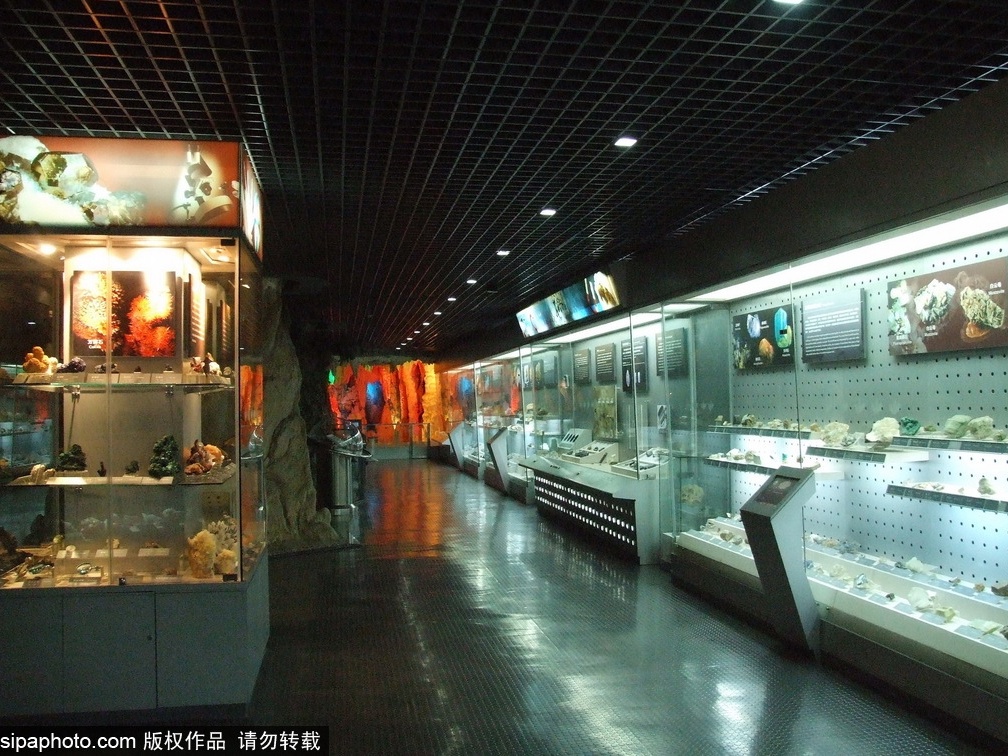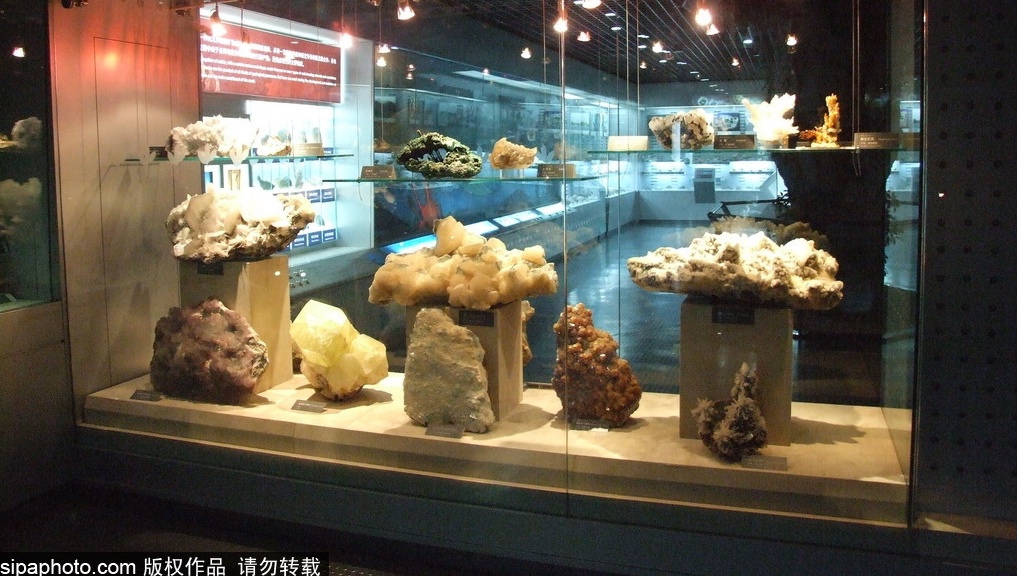
Founded in 1916, the Geological Museums of China is the national geological museum with the longest history in China. More than 200,000 collections covering all sectors of geoscience crown the reputation of the Museum. The fossil collections unveil the mystery of prehistoric life. Dinosaur fossils, including Shantungosaurus giganteus and Sinosauropteryx, present a picture of wild beasts in ancient forest. Hominid fossils of Peking Man, Yuanmou Man, Shandingdong Man and other hominid picture the life of hominid. The museums also accommodate rare ancient paleontological fossils of fishes, birds, insects and other prehistoric life which hold value to scientific investigation and are worthy of appreciation. Various typical Chinese mineral specimens, such as the largest crystalon Earth, "King of Crystal", giant fluorite-calcite druse, exquisite azurite, cinnabar, realgar, orpiment, scheelite, and stibnite, and diverse precious stones reputed as "national treasures”, like gem and jade, shine with the beauty of nature and the luxuriant mineral wealth.
Consisting of 6 exhibition halls, involving the Earth Hall, the Mineral Hall, the Gemstone Hall, and the Prehistoric Creature Hall, the Geological Museum of China covers an area of 2500sqm in addition to temporary exhibition zones of 1500 sqm. The Museum has possessed more than 120,000 geological specimens, covering 13,000 prehistoric creatures, 21,000 strata, 10,000 mineral, 6,000-plus rocks, 1,000-plus gemstones, 33,000 mineral deposits, 1,000-plus geological phenomena, massive geodes and others. The achingly rare Shantungosaurus giganteus, King of Crystal, and fossils of primitive birds that were unearthed in the west of Liaoning Province stand out among the numerous exhibits.

The Earth Hall themed with dynamic describes critical endogenous and exogenous geological processes. The eastern exhibition shows endogenous geological processes, focusing on tectonic movements, folds and faults, volcanism, and earthquakes; exhibition in the west mainly introduces the influence of water and wind, which belongs to exogenous geological processes.
The raw and finished gemstones, jade, organic gemstones, precious metals and other minerals are displayed in the Gemstone Hall. Relevant knowledge is introduced as well, namely, identifications, appreciation, gem cutting and polishing, evaluation, origins, gem microcosms, distributions, mining, processing, inlay jewelry, artificial improvement of gems, artificial gems and the production, and gem culture.
The Mineral Hall, featuring wide appeal, vivid and detailed exposition, virtual and entertaining design, explains the origins of minerals, the original output, the diversity and variety of mineral rocks, the sensory features of typical mineral rocks and their uses through participation and appreciation.

Prehistroic Creature Hall
The Prehistoric Creature Hall illuminates the development of creatures, representative fossils of different geologic time scales, and the origin, evolution, extinction of species according to major events in biological evolution.
Opening Hours
9:00-16:30 (Sales are closed at 16:00; the Museum is closed on every Monday.)
Tickets:
30 yuan for adults; 15 yuan for students
Official Website:
http://gmc.org.cn/
Contact No.:
+86-010-66557858
Address:
No. 15, Yangrou Hutong, Xisi, Xicheng District, Beijing
Transportation:
Subway: take Line 4 and get off at Xisi Station. (Exit D)
Bus: take Bus 13, 22, 38, 47, 68, 101, 102, 103, 105, 109, 124, 409, 603, 612, 619, 709, 726, 806, 808, 812, 814, 823, or 826 and get off at Xisi Station; take Bus 7 and get off at Baitasi Station; take Bus 14 or 55 and get off at Xi’anmen Station.



